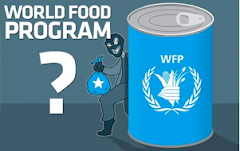http://world-countries.net/archives/22026

Photo: Wikimedia
Multilateral banks have higher overheads than bilateral (country) donors, says study
DAKAR, 8 April 2010 (IRIN) – Multilateral donors like the World Bank and the European Commission spend far more than individual country donors on overheads, according to research by New York University.
Multilateral donors spent a third of their aid on overhead costs and one fifth on salaries in 2008, which was respectively three and five times more than bilateral donors, the research indicated.
While the average donor spends 17 percent on overhead costs, Belgium manages to spend only 0.24 percent on overheads.
Italy, Japan, USA and the Netherlands spend less than 1 percent of their overall budgets on salaries and benefits, according to the research, which was conducted by New York University Department of Economics researcher Claudia Williamson.
Williamson studied aid figures reported by donors to calculate the ratio of administrative costs to official development assistance (ODA, official support given by governments to developing countries) and official development financing (ODF, including grants and loans from multilateral banks); the ratio of salaries and benefits to ODA or ODF; and the total ODA or ODF disbursements per employee.
Donors spent an average of US$6 million on aid per employee (bilaterals $8.5 million and multilaterals $2.4 million).
When salary and overhead cost rankings were combined, Norway, Germany, Japan, the Netherlands and Australia came in the top five, and UN agencies WFP, UNDP, UNFPA, the UN Refugee Agency (UNHCR), and the Global Environment Fund (GEF) come last out of 42 donors studied. However, UN agencies are practitioners, not just donors, and thus such like-for-like comparisons do not really work, an aid analyst at a recent aid transparency conference told IRIN.
Numbers do not tell the full story, added aid analyst Karin Christiansen, head of the NGO Publish What You Fund. Overhead costs, for instance, are necessarily higher when channelling aid to fragile states versus those with strong administrations, she told IRIN.
The study is part of a series looking at aid effectiveness, according to Williamson. “We were not surprised by the findings,” Williamson told IRIN. “They followed up on previous research Easterly [Economics Professor William Easterly] has already done.”




No comments:
Post a Comment